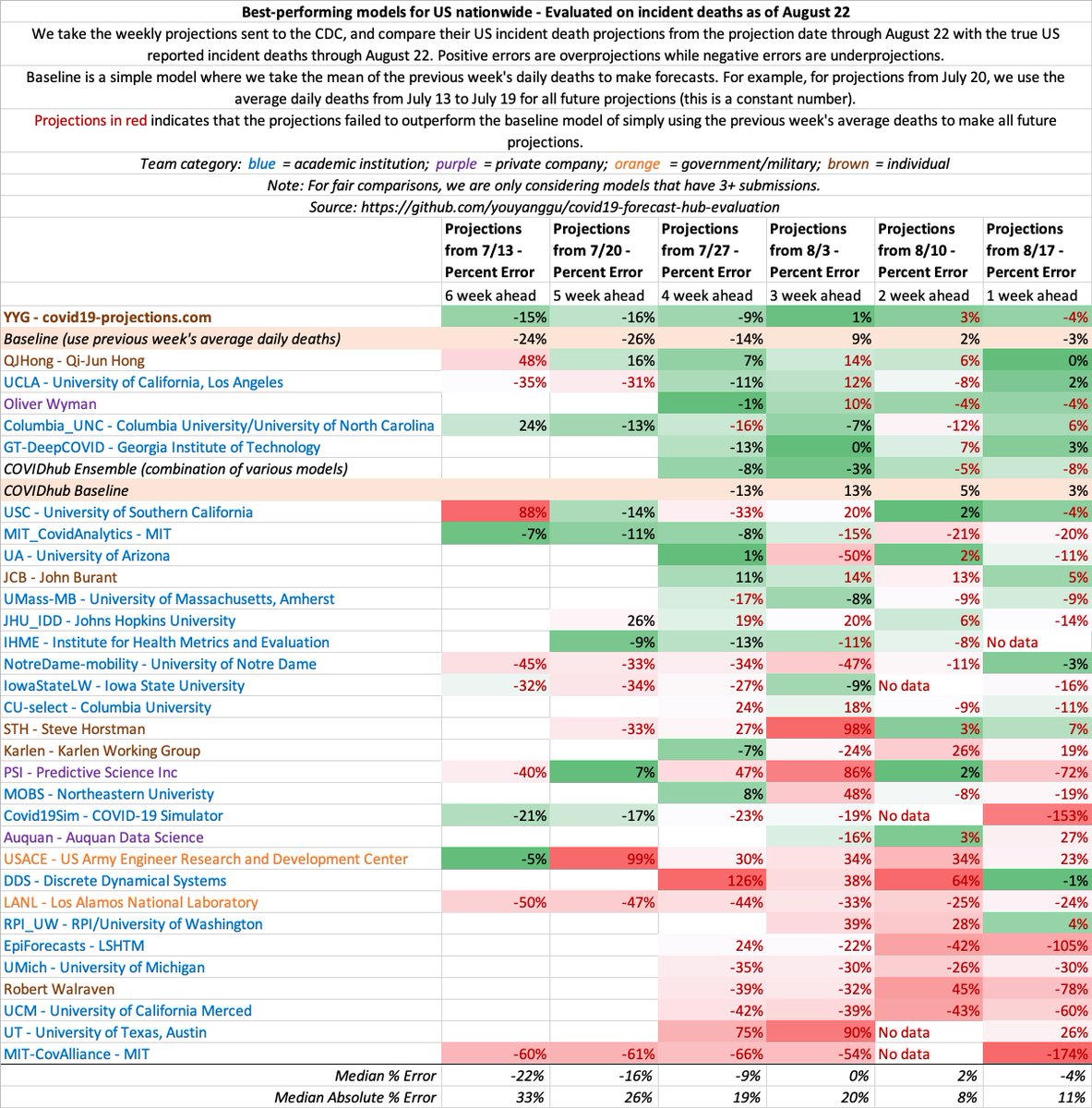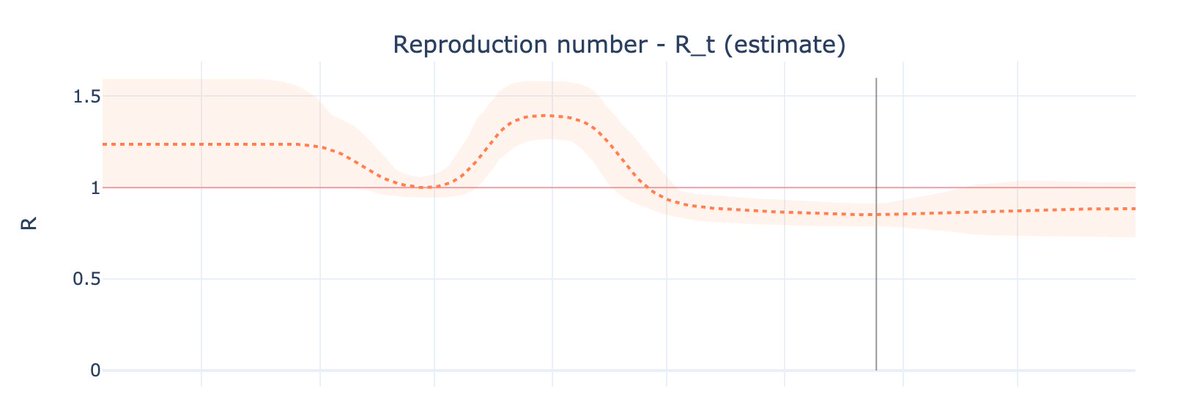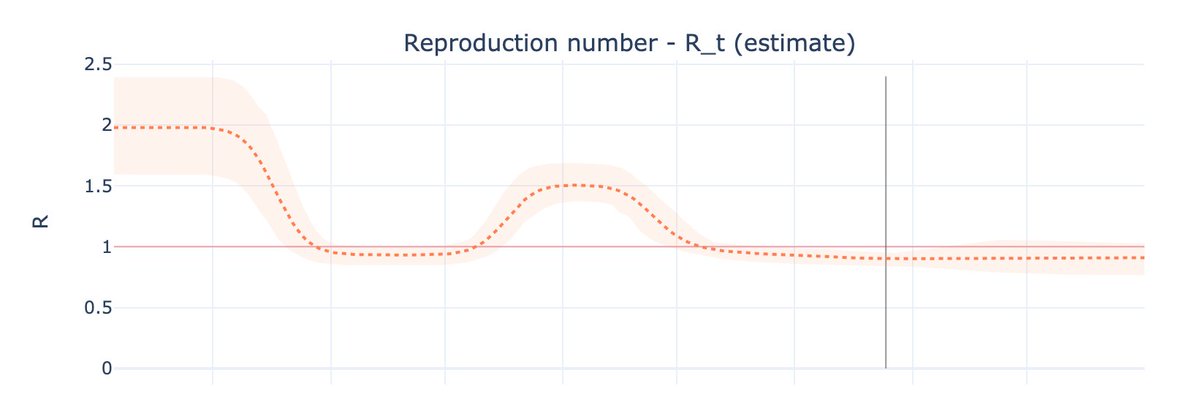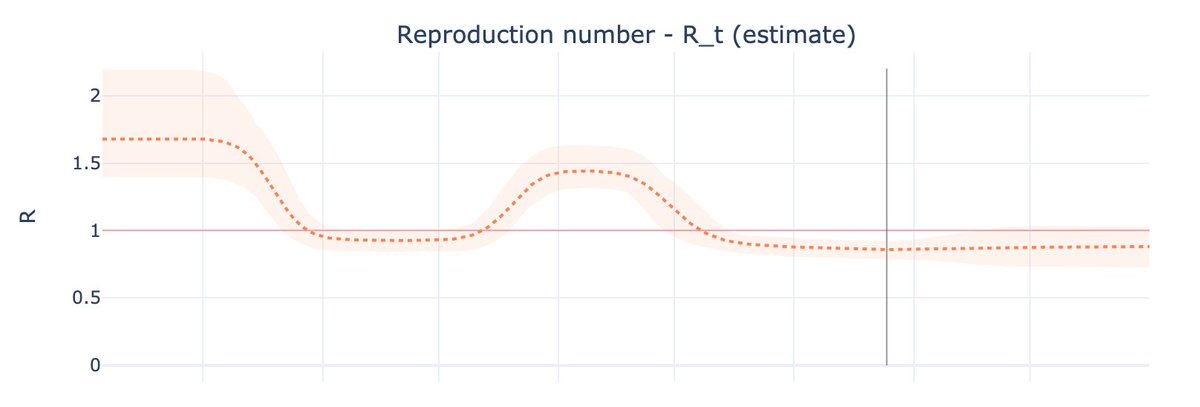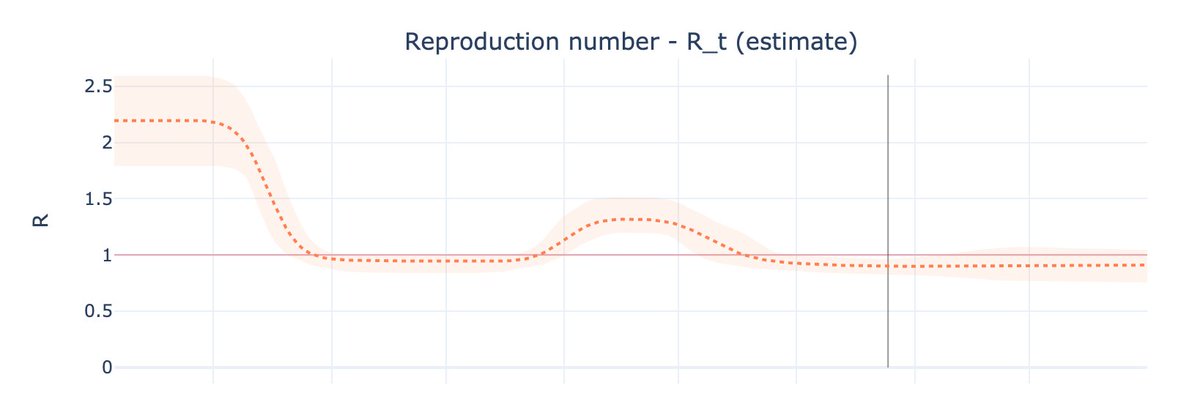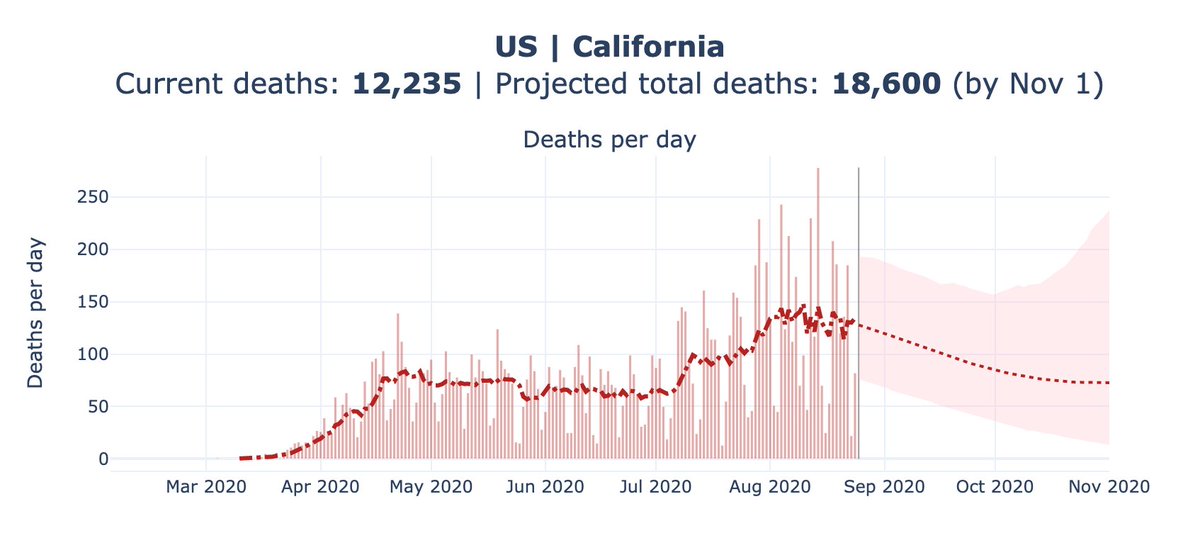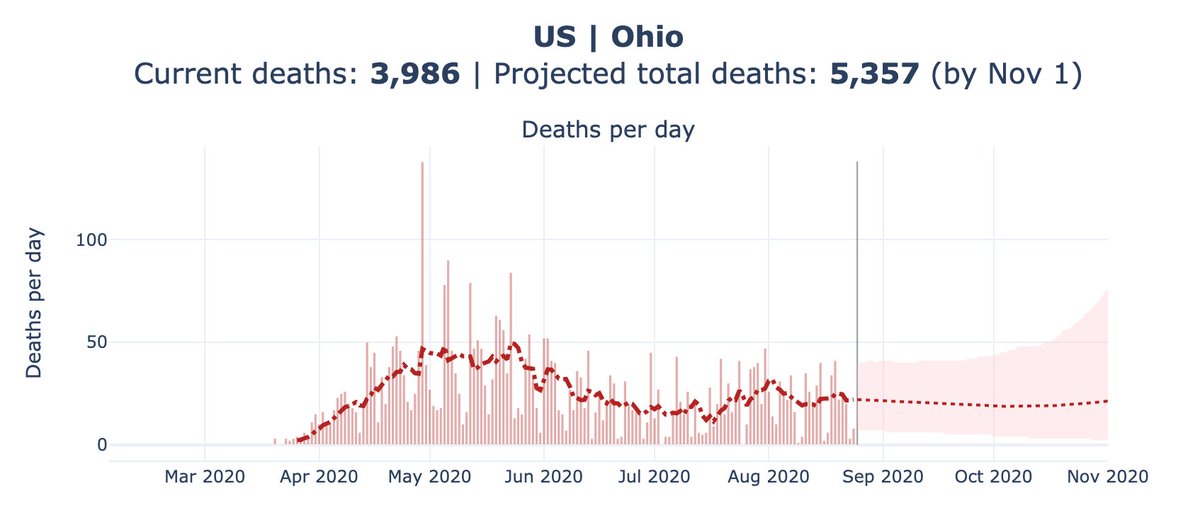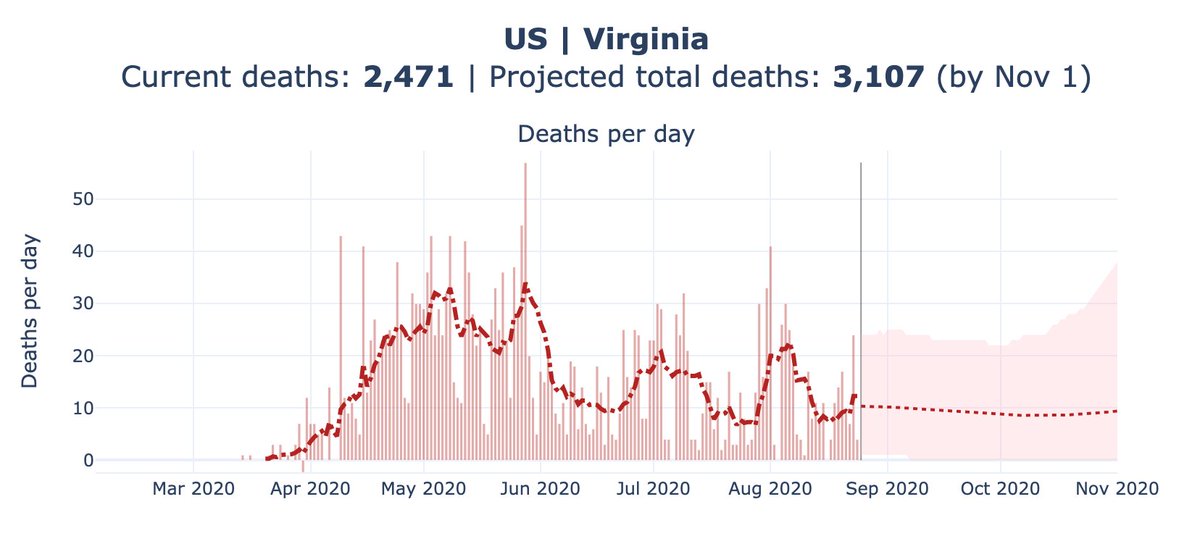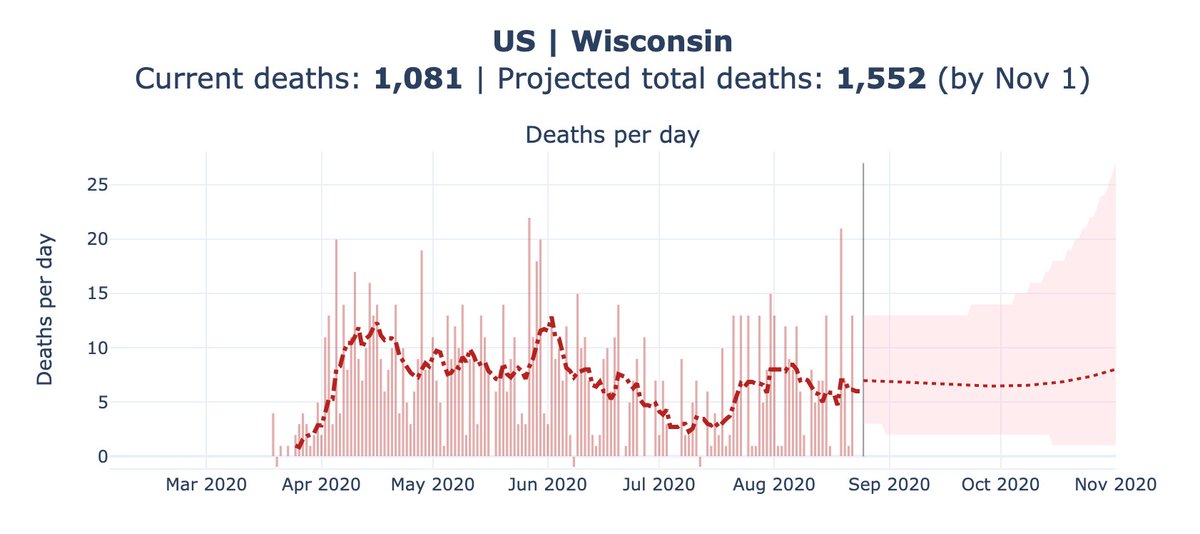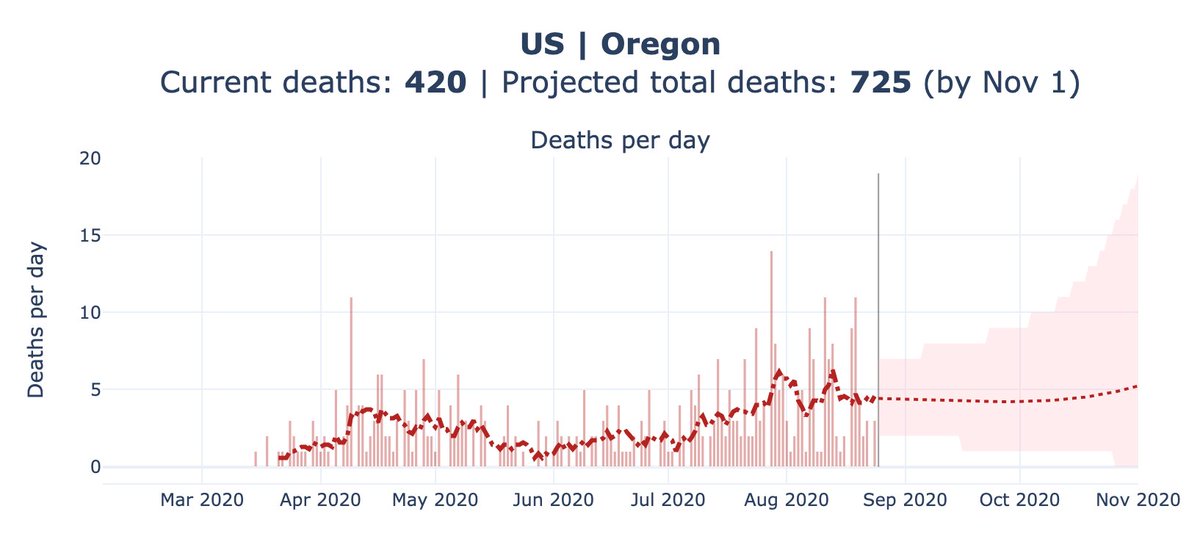In our update this week, we& #39;ve lowered our COVID-19 projections by ~10%. We& #39;re now forecasting 42,000 (25-68k) additional deaths & 220,000 total deaths (202-244k) by November 1.
See our latest projections at: http://covid19-projections.com"> http://covid19-projections.com
Below are some additional observations.
1/n
See our latest projections at: http://covid19-projections.com"> http://covid19-projections.com
Below are some additional observations.
1/n
According to our open-source evaluations, http://covid19-projections.com"> http://covid19-projections.com continues to be a top-performing model for both US and state-by-state recent projections.
#historical-performance">https://covid19-projections.com/about/ #historical-performance
2/n">https://covid19-projections.com/about/...
#historical-performance">https://covid19-projections.com/about/ #historical-performance
2/n">https://covid19-projections.com/about/...
There are still many media reports saying that there might be 300,000 deaths by December.
Using our projections, the chances of that are very low.
I think it& #39;s important that the media provides a realistic view of the pandemic, rather than one shaped by fear and headlines.
3/n
Using our projections, the chances of that are very low.
I think it& #39;s important that the media provides a realistic view of the pandemic, rather than one shaped by fear and headlines.
3/n
Currently, the model does take into account the possibility of a fall wave, but this is by no means a certainty.
If people continue to follow the advice of trusted scientists and public health experts, we can continue making progress and prevent another surge.
4/n
If people continue to follow the advice of trusted scientists and public health experts, we can continue making progress and prevent another surge.
4/n
An interesting observation is that infections are decreasing in July/August at a similar rate as March/April, when most states were under stay-at-home orders.
Could this mean lockdowns are not very effective? Or could population immunity be playing a large role?
5/n
Could this mean lockdowns are not very effective? Or could population immunity be playing a large role?
5/n
If you look at places like Arizona, Texas, Florida and Georgia, the reproduction number, Rt, is lower than during lockdown.
Are people somehow practicing social distancing more now than during lockdown? The data doesn& #39;t seem to suggests this.
Immunity is likely a factor.
6/n
Are people somehow practicing social distancing more now than during lockdown? The data doesn& #39;t seem to suggests this.
Immunity is likely a factor.
6/n
Separately, California was one of the first states to issue a stay-at-home order, and one of the last to reopen.
Deaths did not significantly decrease during lockdown, and following reopening, deaths more than doubled in the span of 2 months.
7/n
Deaths did not significantly decrease during lockdown, and following reopening, deaths more than doubled in the span of 2 months.
7/n
On the positive side, states like Ohio, Virginia, Wisconsin, and Oregon are doing a relatively good job at containing the spread. Their death rate per 1M is less than 25% of Florida/Texas/Arizona.
In these states, policy + behavior likely play a larger role than immunity.
8/n
In these states, policy + behavior likely play a larger role than immunity.
8/n
I want to avoid the term "herd immunity" because a lot of people have been misusing it (including myself a few weeks ago).
It& #39;s a term rooted in the context of immunity gained from vaccinations, not infections. And it assumes normal behavior, which is not the case here.
9/n
It& #39;s a term rooted in the context of immunity gained from vaccinations, not infections. And it assumes normal behavior, which is not the case here.
9/n
With that said, the data does suggest that a mixture of behavior change + population immunity is responsible for the recent decrease in cases/deaths.
It& #39;s too early to conclude that "behavior doesn& #39;t matter" or "immunity doesn& #39;t play a role".
https://twitter.com/youyanggu/status/1292898685173534722
10/n">https://twitter.com/youyanggu...
It& #39;s too early to conclude that "behavior doesn& #39;t matter" or "immunity doesn& #39;t play a role".
https://twitter.com/youyanggu/status/1292898685173534722
10/n">https://twitter.com/youyanggu...

 Read on Twitter
Read on Twitter
